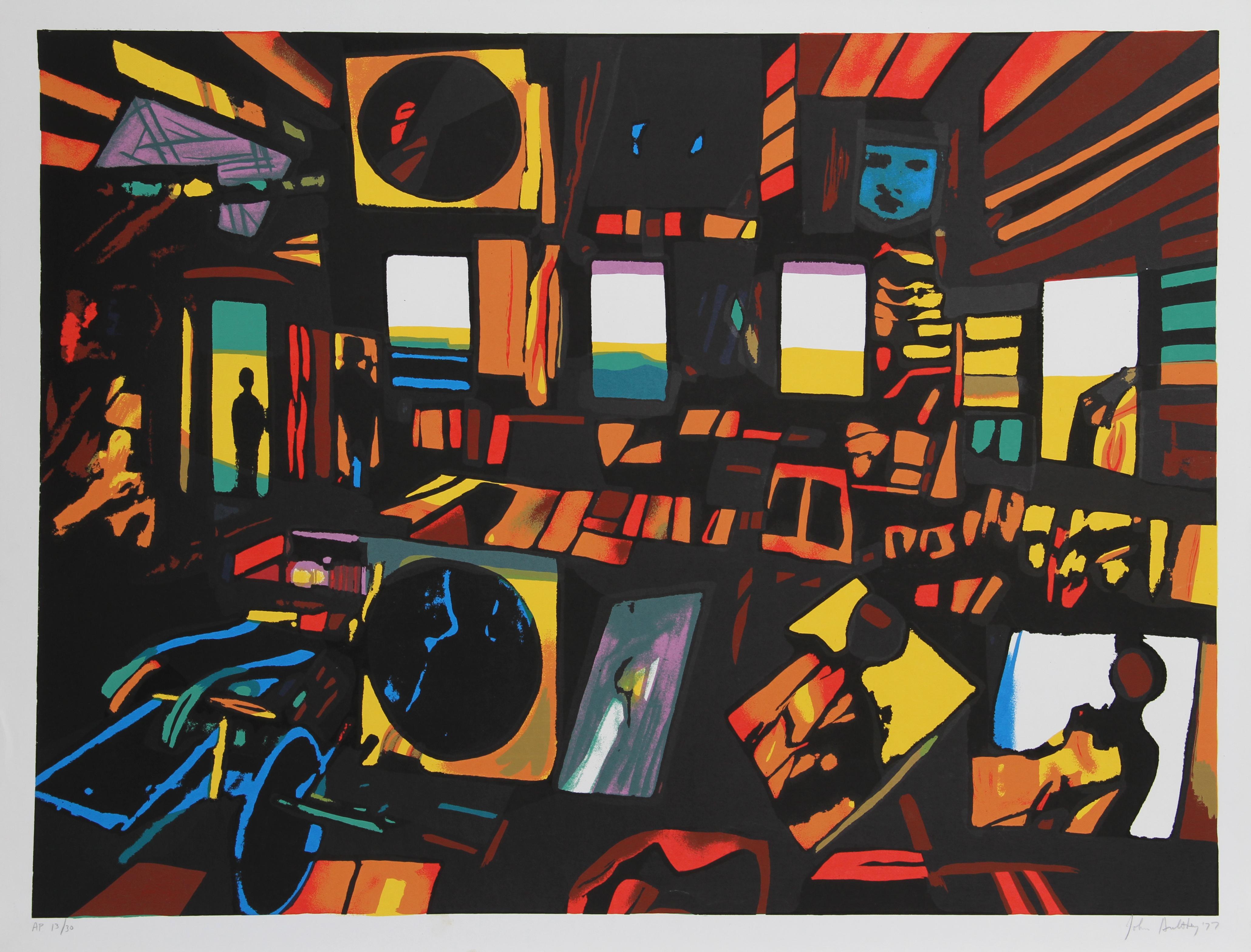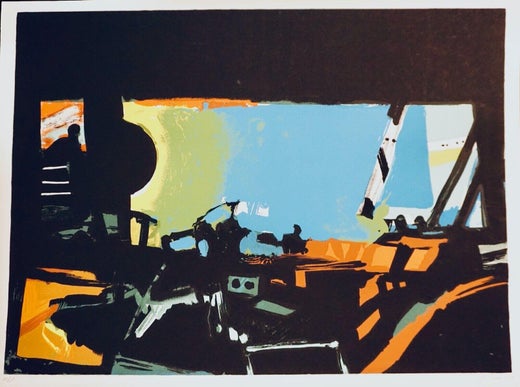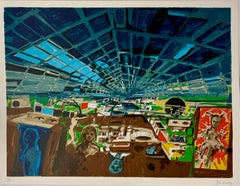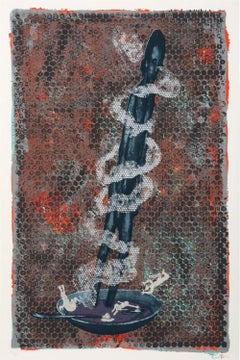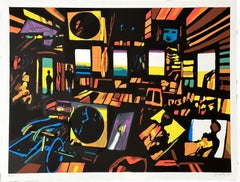Jorg Immendorff (German, 1945-2007)
Untitled, Germany, 2006
serigraph
hand signed and dated lower right margin, numbered 20/27 lower left
framed
74.5 x 48.75 inches (sight).
82.25 x 55.5 inches (frame).
This work is number 20 from the edition of 27.
Provenance: T. Kreuzer Gallery, Cologne, Friedman Benda Gallery, New York City
Jörg Immendorff (1945–2007) was a German painter, sculptor, stage designer and art professor. He was a member of the art movement Neue Wilde. He worked as a painter, sculpture and print maker in steel, bronze, oil painting, lithography etching and serigraphy.
Immendorff was born in Bleckede, Lower Saxony, near Lüneburg on the west bank of the Elbe. He attended the boarding School Ernst-Kalkuhl Gymnasium as a student. At the age of sixteen he had his first exhibition in a jazz hall cellar in Bonn.
Beginning in 1963, Immendorff studied at the Art Academy in Düsseldorf (Kunstakademie Düsseldorf). Initially he studied for three terms with the theater designer Teo Otto. After Otto threw him out of his class for refusing to let one of his paintings serve as stage-set decoration, Immendorff was accepted as a student by Joseph Beuys. The academy expelled him because of some of his (left-wing) political activities and neo-dada actions.
From 1969 to 1980, Immendorff worked as an art teacher at a public school, and then as a free artist, holding visiting professorships all over Europe. In 1989, he became professor at the Städelschule in Frankfurt am Main and in 1996 he became professor at the Art Academy in Düsseldorf—the same school that had dismissed him decades earlier as a student.
Jörg Immendorff often worked in "grand cycles of paintings" that often lasted years at a time and were political in nature. Notable cycles include LIDL, Maoist Paintings, Cafè Deutschland , and The Rake's Progress. The first body of work that Immendorff gave a name to were his LIDL paintings, sculptures, performances, and documents, that he executed during 1968-1970. The name, "LIDL" was inspired by the sound of a child's rattle makes and much of his work from this period included the iconography of new beginnings and innocence. LIDL is comparable to Dadaist but unlike the Dada movement it never became an established group but rather consisted of a variety of artists (including James Lee Byars, Marcel Broodthaers, Nam June Paik, and Joseph Beuys) participating in actions and activities.
In January 1968 he appeared in front of the West German Parliament in Bonn with a wood block labeled “Lidl” tethered to his ankle and painted in the colors of the German flag; he was subsequently arrested for defaming the flag.
Best known is his Cafe Deutschland series of sixteen large paintings (1977–1984) that were inspired by Renato Guttuso Caffè Greco; in these crowded colorful pictures, Immendorff had disco-goers symbolize the conflict between East and West Germany. Since the 1970s, he worked closely with the painter A. R. Penck from Dresden (in East Germany).
Immendorff created several stage designs, including two for the Salzburg Theater Festival. He designed sets for the operas Elektra and The Rake's Progress. The latter also inspired a series of paintings in which he cast himself as the rake.
In 1984, Immendorff opened the bar La Paloma near the Reeperbahn in Hamburg St. Pauli and created a large bronze sculpture of Hans Albers there. He also contributed to the design of Andre Heller's avant-garde amusement park "Luna, Luna" in 1987. Immendorff created various sculptures; one spectacular example is a 25 m tall iron sculpture in the form of an oak tree trunk, erected in Riesa in 1999. In 2006, Immendorff selected 25 of his paintings for an illustrated Bible. In the foreword he described his belief in God.
A major 2019 survey began at the Haus der Kunst in Munich and later traveled later to the Museo Reina Sofía in Madrid and the Fondazione Querini Stampalia in Venice, curated by Francesco Bonami. In 2000, Immendorff married his former student Oda Jaune. The have one daughter Ida Immendorff. He was a member of the Junge Wilde (German for "young wild ones")
In 1978, the Junge Wilde painting style arose in the German-speaking world in opposition to established avant garde, minimal art and conceptual art. It was linked to the similar Transavanguardia movement in Italy, USA (neo-expressionism) and France (Figuration Libre). The Junge Wilde painted their expressive paintings in bright, intense colors and with quick, broad brushstrokes very much influenced by Professor at the Academy of Art in Berlin, Karl Horst Hödicke (b:1938). They were sometimes called the Neue Wilde. Berlin:
Luciano...
